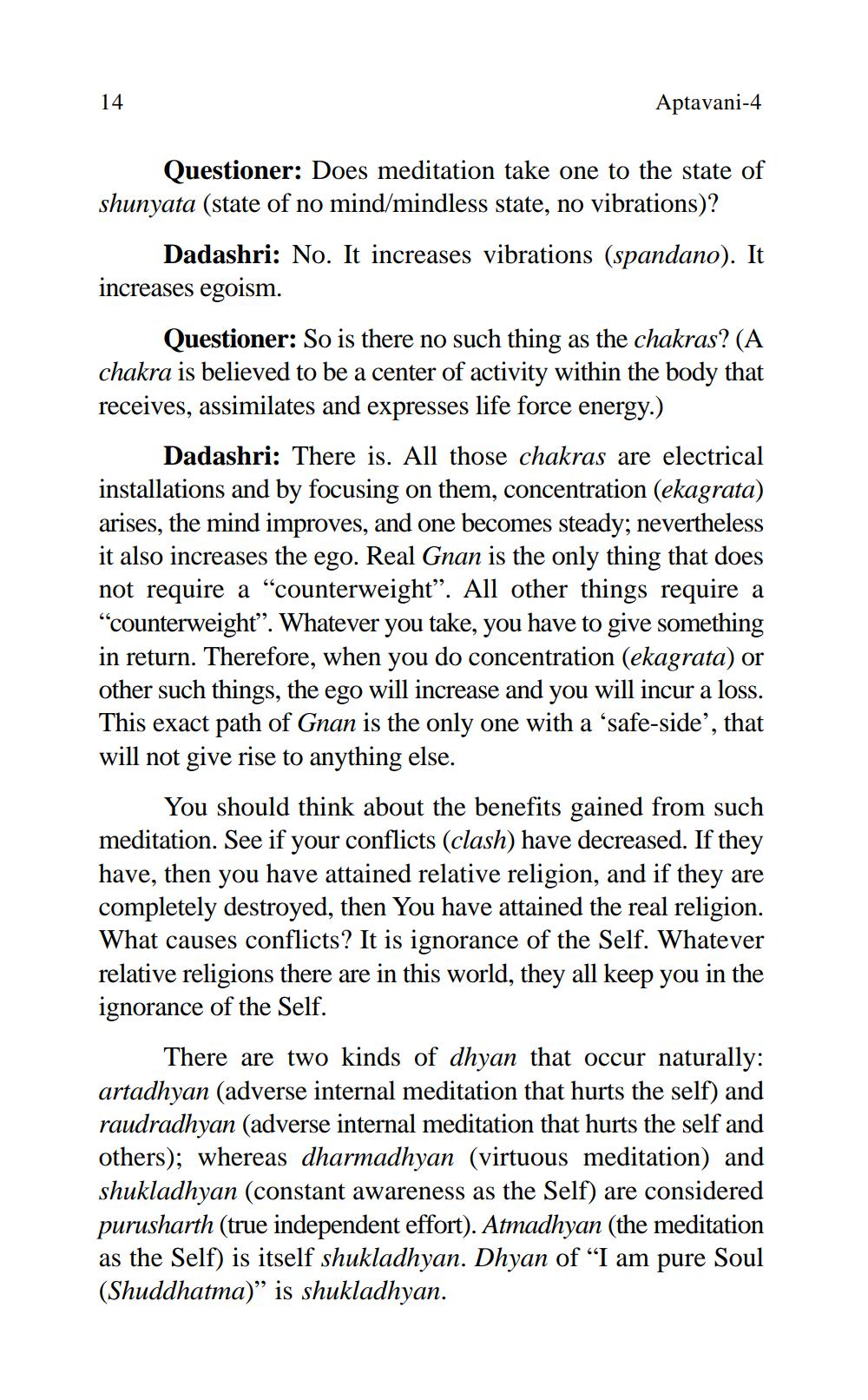________________
14
Aptavani-4
Questioner: Does meditation take one to the state of shunyata (state of no mind/mindless state, no vibrations)?
Dadashri: No. It increases vibrations (spandano). It increases egoism.
Questioner: So is there no such thing as the chakras? (A chakra is believed to be a center of activity within the body that receives, assimilates and expresses life force energy.)
Dadashri: There is. All those chakras are electrical installations and by focusing on them, concentration (ekagrata) arises, the mind improves, and one becomes steady; nevertheless it also increases the ego. Real Gnan is the only thing that does not require a “counterweight”. All other things require a "counterweight. Whatever you take, you have to give something in return. Therefore, when you do concentration (ekagrata) or other such things, the ego will increase and you will incur a loss. This exact path of Gnan is the only one with a 'safe-side', that will not give rise to anything else.
You should think about the benefits gained from such meditation. See if your conflicts (clash) have decreased. If they have, then you have attained relative religion, and if they are completely destroyed, then You have attained the real religion. What causes conflicts? It is ignorance of the Self. Whatever relative religions there are in this world, they all keep you in the ignorance of the Self.
There are two kinds of dhyan that occur naturally: artadhyan (adverse internal meditation that hurts the self) and raudradhyan (adverse internal meditation that hurts the self and others); whereas dharmadhyan (virtuous meditation) and shukladhyan (constant awareness as the Self) are considered purusharth (true independent effort). Atmadhyan (the meditation as the Self) is itself shukladhyan. Dhyan of “I am pure Soul (Shuddhatma)” is shukladhyan.




